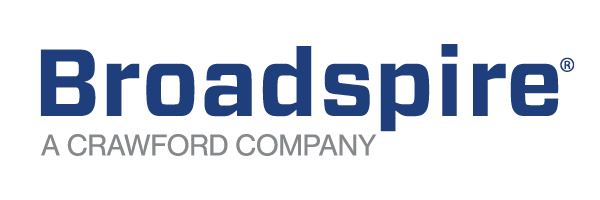The Pregnant Workers Fairness Act (PWFA) was created to bridge the gap between federal laws, as Carol Miaskoff, legal counsel for the Equal Employment Opportunity Commission, explains in this episode. Listen in to hear Miaskoff talk with Marjory Robertson, AVP and senior counsel for Sun Life, about top employer challenges. The two also offer guidance from the PWFA rule to support employees and ensure employer compliance!
Resources:
- How Employers Could Get into Trouble Under the PWFA
- DMEC Annual Conference Aug. 5-8 in Nashville
- Section of the EEOC regulations for the PWFA that specify unnecessary delays
Transcript
DMEC: Welcome to Absence Management Perspectives: A DMEC Podcast. The Disability Management Employer Coalition, or DMEC as we're known by most people, provides focused education, knowledge, and networking opportunities for absence and disability management professionals. DMEC has become a leading voice in the industry and represents more than 20,000 professionals from organizations of all sizes across the United States and in Canada. This podcast series focuses on industry perspectives and delves into issues that affect DMEC members and the community as a whole. We're thrilled to have you with us and hope you'll visit us at www.dmec.org to get a full picture of what we have to offer, from webinars and publications to conferences, certifications, and much more. Let's get started and meet the people behind the processes.
sented on the PWFA during the:Carol Miaskoff: Sure. Well, thank you so much, Heather, and I'm really happy to be back here with you and with Marge. The elevator pitch for the PWFA is that Congress wrote it to bridge the gap between all the other laws in this area with respect to pregnancy, childbirth, and related medical conditions. You have a lot of laws here, but none of them sort of provide everything that's needed for workers when they're pregnant or experiencing childbirth or related medical conditions. So you have title VII that prohibits discrimination based on pregnancy, but it only allows leave in limited circumstances, and it only allows accommodation under limited circumstances. You have the ADA that allows accommodation, but only if something's a disability. And you have the FMLA, which only allows leave but doesn't involve accommodations to keep working. So Congress basically looked and they saw this sort of crater between all of these laws, and they decided to fill it in. I think they also were sort of tired of hearing about situations where people would ask for very basic accommodations when they were pregnant and working like a stool to sit on or break to go to the bathroom more often, as us women know we have to do when we're pregnant. And in some instances, in more extreme instances, people were getting fired as a result of this. And I think some folks in Congress were like, come on, we can do better than this. So the PWFA sort of grew out of all of that, and I always see it legally as a child of ADA and Title VII, and PWFA is their baby because it includes aspects of both laws. And that's a long elevator ride.
Heather Grimshaw: No, I love that. I think that's great. A child of the ADA and Title 7. So final regulations for the PWFA went into effect in June. What are three of the most common points of confusion for employers? Marge, I'm hoping you'll kick us off here, and then we'll get Carol's input.
Marjory Robertson: Sure. And of course, I can never be limited to just three, so I actually have. But we'll go one by one. I think one area of confusion that I'm hearing a lot from employers is, well, can we still use the FMLA, or is everything now the Pregnant Workers Fairness Act? And I think there's a pretty simple way to understand that. And I bounced it off Carol before this, so I'm hoping she still agrees. Once I actually articulated my view of accommodation laws, the ADA, the PWFA is they're kind of gaps fillers, as Carol was saying. And so what employers should do is they should first look to the FMLA, which has a leave allotment that you have a certain amount per year that you have to use. There are state laws that have similar leave allotments, and I think what the employer needs to first do is if one of those laws with an allotment applies, they should use that law. It'll typically just be for leave. It's not going to be relevant for a workplace accommodation. But there are a lot of leave laws out there. They can then run the leave under those laws, and they don't really even need to think about the PWFA. So I don't think Congress wanted to make the process of keeping track of leave laws even more complicated. I think that the easiest way to think of it is you pull in the PWFA and the ADA, whenever there isn't another law that applies. And so there will be times when somebody would be entitled to leave probably under the PWFA, but you don't need to talk about it because they're eligible for the FMLA. So, Carol, I don't know what your thoughts.
Carol Miaskoff: Right. I agree. I agree. I always, I think of the PWFA in any event, and the ADA as essentially, I almost have a vision of pouring, pouring something out of a pitcher into sort of something with a lot of cracks in it, and the liquid comes in and fills in the cracks. And that's what the, you know, the accommodation laws, as Marge said, that's what they do in light of the leave laws that we have.
And also, I mean, some employers just have policies, you know, or, you know short-term disability policies, et cetera, you know, in addition to whatever leave laws. So the accommodation laws come in and they kind of fill in all those cracks. But some of those cracks are not trivial because these laws mostly go to leave. So we have a ton of laws around taking time off. One of the reasons we have the PWFA was because sometimes people can and want to and need to keep working. And the PWFA provides a accommodation just to keep working, even when the medical condition is related to pregnancy, child visit related medical conditions, and it may not at all be a disability.
Marjory Robertson: That's a great point, Carol. And I would just add in that the PWFA, it has what I call bells and whistles that the ADA doesn't have. And one of them is that leave is kind of treated very differently under the PWFA than it is under the ADA, which is that the law comes right out and says that if an employee wants to work and there is a reasonable accommodation that can be offered without undue hardship, then an employer cannot say, well, your only option is leave. So I think that's a very important issue. The second question that I have, which is a frequent question, relates to the ADA and the PWSA. So I've heard a number of employers say, well, how do we know if something should be looked at under the ADA or under the PWFA? I think if you have a pregnancy or childbirth, it's more obvious. I think where it gets confusing to employers is if you have a medical condition that's made worse by pregnancy, that can actually be a related medical condition under the PWFA, or if you have something like postpartum depression. But then we have employers asking, well, how long does the PWFA apply for. And I know, Carol, you have some thoughts on that one?
he ADA Amendments Act back in:Marjory Robertson: Yeah, I completely echo what Carol's saying. I think an employer, if somebody comes in with postpartum depression and an employer says, well, we don't think it's postpartum. We just think it's regular old depression, that's legally risky to do because there are employees have more rights under the PWFA than they do under the ADA? I think the historical reason for that, or the legislative reasoning behind it is that pregnancy and even postpartum depression is a temporary state. It is not something that could potentially become a lifelong condition.
Carol Miaskoff: Right. And I would just jump in and say quickly that I think postpartum depression is a great example of, when you're looking at, do I go ADA or PWFA? And if it can be related to the pregnancy, childbirth, or pregnancy, or childbirth. As postpartum depression can be, you're in there and there'll be more obligations, frankly, as an employer. Other situations when this comes up is.
Carol Miaskoff: If you have, like, say, someone, I mean, a really severe one would be someone has type one diabetes, which, you know, can become incredibly risky when you're pregnant. So look, you know, they may already have accommodations under the ADA, but may need more accommodations when they're pregnant, then look under PWFA for that.
Marjory Robertson: Another thing I learned from Carol in our prep today is she gave me a way to think about things like menopause more clearly, because I think a lot of employers are confused about how that fits in. And what I remember Carol saying, we'll see if I got it right, is that if they're struggling with menopausal issues but also trying to get pregnant, and so it is, the menopause is interfering with or affecting their ability to get pregnant. That's when it would be covered under the PWFA. But many women may not be happy to hear this, but I don't think it generally now covers menopause.
Carol Miaskoff: No, it does not generally cover menopause. It does not generally cover menstruation. We got a lot of comments about that. But some people saying it should. Some people saying definitely not. Where we ended up in the role is that the PWFA says conditions related to pregnancy or childbirth or related medical conditions, which is redundant. And so if you have issues around menopause that relate to getting pregnant, first of all, you might look at that as infertility, essentially. But treatment of infertility will be covered if you're trying to get pregnant. And or, you know, even when we throw it around, we said, what if someone had a very difficult birth and had to have a hysterectomy as sort of part of the birth and then went into premature menopause right afterwards? That would be a related medical condition to the pregnancy and childbirth. So it has to be tied into the pregnancy or the childbirth of the employee at issue. Okay. And if it's not. Forget about it.
Marjory Robertson: Now we're going to get into the one that I think is. It gets. Gets at a lot of issues, and it's the first one where we've openly talked about medical documentation. But Carol and I were reviewing some of the questions from the sessions we did, and there were a number of questions about, can we ask for medical documentation proving the employee is pregnant? I learned something today about the EEOC's perspective on medical documentation. So, Carol, I'm going to let you give the answer to, are employers allowed to ask for medical documentation to prove that somebody's pregnant?
Carol Miaskoff: Okay. No, they're only allowed to seek self-confirmation from the employee. And self-confirmation is not fancy. You don't need a notary. You don't need a witness. You just say, yes, I'm pregnant. And we said that for a variety of reasons, one being that a lot of times, people don't even get in to see an ObGyn until late in the first trimester and they may already be struggling with some of these symptoms. You know, self-confirmation. You know, sort of. We're joking about it before Marjorie, but, you know, self-confirmation. And all they may have is that stick. You know, the test put the line on it, you know, and that's the self-confirmation. No, you should not ask to see the stick, but to confirm pregnancy.
Marjory Robertson: Or to be present when they use the stick.
Carol Miaskoff: Definitely not. So, you know, self-confirmation for pregnancy, self-confirmation for pumping and anything related to lactation. And then we also have, I think, self-confirmation. If it's obvious now, everyone. We also started laughing when we were talking about what's obvious. And obviously, people could say, everyone's been through the thing, oh, she's just fat. She's not pregnant. And so many people don't want to go there. But when we talk about obvious, in the essu rule, we mean, like, really obvious. We mean, like a bus driver or someone who has a uniform and they're eight months pregnant and they're busting out of it and they need a bigger size, you know, or they're seven months pregnant, or they're six months pregnant, and they're incredibly athletic and they're just beginning to go or something. But in any event, if it's. We mean, like, really obvious. I mean, like, you can't dispute it.
Marjory Robertson: Okay, so Heather, you asked for three. I'm going to give you a bonus, a bonus question. And it's actually one that I find fascinating. And it's the. I think it's inevitable. We're going to see increasing requests to work from home. And I think that those are going to be challenging for employers to deal with for a variety of reasons, probably the most important of which is this concept that if it's an essential function of the office to be in the office, well, the PWFA says that that can be temporarily suspended during the period of time of the pregnancy. And so then the employer is left with only being able to show undue hardship. And if the person's job is just kind of a desk job and doesn't have to be done on site, I think it's going to be hard for employers to show that it's an essential, I mean, that it's an undue hardship if this person doesn't come in. So I think what may start to happen with this is that employers, employees are going to request to work from home. I think employers may propose alternative accommodations, which they're entitled to do. And the EEOC makes clear that actually the employer has the discretion to choose between effective accommodations. And that's where I think we're going to see a lot of arguments. So I see it already. When people want to work from home, the employer will say, well, we need everybody in the office, but we'll give you a flexible schedule, or we'll give you this, or we'll give you that. And so if the employee agrees that that is an effective accommodation, great. But I think in a lot of cases, employees and their healthcare providers may stand firm and say that is not effective. So I think there is a risk of litigation in this area. So, Carol, I'm interested in your thoughts on that.
Carol Miaskoff: What Marge was saying really sort of brought back to me one of the sort of core, what I see is one of the core principles of the PWFA is that, you know, Congress, and there's a lot of legislative history about this. I mean, you know, pregnancy is temporary. You know, Congress wrote this law in part because they were looking at situations maybe under the ADA, maybe under other kind of programs, where the negotiations would go on forever and people essentially wouldn't get an effective accommodation. So Congress really emphasized two things. One is the interactive process, and they really mean just talking about it. And if you look at the interpretive guidance after the regulation, which is pretty straightforward, and we have some examples of really simple, interactive process, like someone calls up and said, hey to their boss, I found out I'm pregnant. I'm having to use the bathroom a lot more. Can I use one of the empty workstations that's right near the ladies room for the time being, that's an interactive process. The person self-confirmed they're pregnant. And if the employer just says, yeah sure, you can move over there for the, you know, let's say we'll check in again after three or four months [and] see how you're doing, that's the end of it. Now, I know that's so simple. And in the real world, often things are not that simple. But the PWFA really, there is really an emphasis by Congress with this law—let's have a meaningful conversation, interactive process, and get it done. You know, either give the accommodation, give an interim accommodation, don't delay. Let's just get things in place, because we are talking about a temporary condition here.
Heather Grimshaw: Yeah, I think the examples, and truthfully, the simpler the better, because we're seeing a lot of questions pop up on DMEC communities about, can I repurpose my AdA form for the PWFA? This is something that Marge talks about in her article, article. And I think that your differentiation there between conditions for the PWFA and disorders for the ADA will be very helpful for people listening to this, for employers who are looking at this new law and trying to comply.
Carol Miaskoff: If I could just jump in, I guess you couldn't see me because this is a podcast but when Heather said, you know, repurpose our ADA forms, I started shaking my head, no, no, no, you know, no, don't do that. Because, you know, the PWFA, Congress made it clear, let's get it done. Let's get it done quickly. Let's get it done simply. Let's not get tied up in knots around, you know, this kind of information. Because of that, you know, I get, well, I should say if you look at it under the ADA, you could get yourself in trouble under the ADA. Because you're only allowed to ask questions about disability that are job related, consistent with business necessity. If someone's asked, you know, just asked for pregnancy leave, and you're asking, you're using this ADA form, which, frankly, in my view, may already ask too much, even for the ADA, you know, it's sure as heck not going to be job related, consistent with business necessity for the PWFA. And then finally, the EEOC did do some regulations on medical documentation, if you want to look at our rule and all the materials around it, and we set some pretty limited situations for medical documentation that are different from the ADA because the ADA standards are not in the PWFA. And basically what we said, the basic rule is that you can only ask for documentation when it's reasonable under the circumstances. And the documentation itself has to be reasonable. Okay. So you say there's another lawyer talking about reasonableness. This means nothing to me. But what it, you know, the bottom line rule is if you can only do it when it's reasonable, it means you can't do it all the time. Okay. And that you have to have a specific reason when you're doing it, when you're asking for documentation. And then you can only ask for the documentation that you really need. And then we say, what is the necessary documentation? Well, it's the minimum to confirm that you have a condition, confirm that it's related to pregnancy, and describe the necessary accommodation. That's it. Now, just to make life more difficult we came in and we said there's situations where you cannot get documentation at all. But before I recite those, I just want to be super clear that just because there are these situations where you cannot get documentation at all, that does not sort of mean the opposite, that you can always get documentation in any other circumstance. No, you can't because you can only get it if it's reasonable under the circumstances. That is, it's unclear and you can only get what's reasonable in amount, which is only to confirm that you have a condition related to pregnancy, childbirth, and to describe the accommodation. So you have ones that are total prohibitions and you have ones where you got to go, you got to stop. You know, stop and think before you start asking. So two steps here. One, do not use your ADA forms because you may get in trouble under the ADA because you'll be asking questions that are not job related, consistent with business necessity. Take a deep breath for that one. So do not use that. And then once you're in the PWFA, minimal documentation. Okay, is the bottom rule the situations where you can't do it at all are, you know, are as follows. There are four what we call predictable assessments, which in most instances will not cause an undue hardship to accommodate. You can't ask for documentation in those. What are those? Those are, and I'm holding up my water bottle here. The first one is just having a drink with you and drinking, you know. And drinking when you need to. Because when you're pregnant, you add a lot of body fluid and you have to drink a lot. So that's the first predictable assessment that it's not going to be an undue hardship in most circumstances unless you're working in a nuclear lab or something. It's not going to be an undue hardship and you can't ask for medical documentation. The second one is allowing someone to sit when they usually stand or stand when they usually sit. The next one is more bathroom breaks, like the person who, as part of their accommodation, needed to be able to use the ladies room more and therefore asked to be moved closer to it. And the final one is breaks to eat or drink. You know, if you're in a job where you have to take a break to do it, if you're not doing a desk job where you always have your water bottle there or your cup of coffee or whatever. So those are the four predictable assessments. No medical documentation. But remember, that does not mean that you can go whole hog on the other ones. It just means only when it's reasonable under the circumstances and only the minimum amount to confirm the need and the nature of the accommodation. So I'll stop here.
Marjory Robertson: Yeah, I just. I want to follow up on what Carol said because this was a conversation we had today, and, you know, I'm not embarrassed to say I learned something today. So I had been thinking that the predictable assessments were the ones where you couldn't ask for medical, but in general for the others, you could. And Carol is adamant that that's not what they intend by the regulations and that there really needs to be a step in the process where when the request comes in, the self-confirmation comes in. I have a condition related to pregnancy, childbirth or related conditions, and I have a limitation, and I need this accommodation. Employee signs it. There needs to be a discussion within the employer. If you're doing it yourself or if you're outsourcing it with your outsourced provider about is it reasonable to ask for medical for this? And an example she gave that really helped me understand that was the person who's gotten too big for their uniform. That is not one of the predictable assessments, but I think that an employer would be in a lot of trouble potentially if they delayed giving an accommodation because they were sending medical off to justify that. And I think even Carol mentioned one on this call right now, the person who wanted to have her desk moved closer to the bathroom. That is not a predictable assessment, but. But it certainly is close to it. So I do think. I'm not sure employers and outsource providers have fully understood the extent to which the medical is. You're much more limited, I think, than people realize. That was the most important thing I learned today.
Carol Miaskoff: You explained it beautifully. You explained it beautifully. And I was thinking even the bit about the person working at the home store who's supposed to climb up the mobile, you know, the mobile.
Marjory Robertson: Right. The ladder. Do you really need medical for that?
Carol Miaskoff: You know, I mean, I could see that going both ways. I mean, but on the one hand, if the person's seven months pregnant and, you know, they're just clearly their balance is off. I mean, what do you need to sort of prove that but say the person is three months or two months pregnant or whatever, you know, so they're nothing unbalanced yet, but they say they're sort of having dizziness spells because of being pregnant. That might be something where it's okay to ask for medical documentation because it's not, certainly it's not obvious, putting sort of quotes around that. And I think it's reasonable that the employer might not understand why or how it’s related to pregnancy, child or pregnancy or related medical condition when they might not understand exactly like what accommodation can they go up one step? Can they not use it at all? Can they push it around? Because you always see those folks pushing these things through the aisles, so they might need more information on what's the accommodation.
Marjory Robertson: Yeah. And so to me, it's fascinating because I think that the PWFA reflects this notion that I think I've told you before that I always tell employers, don't screw around with pregnant women. I think that's the underlying theme of the PWFA. And so I think there's a common sense aspect to it. So you've identified predictable assessments, which is a very fancy word for a very common sense that if an employee who is pregnant or has a related condition is asking for a type of accommodation, that if you just use your common sense, it makes sense, then employers should be very careful about asking for medical. One way employers can potentially help protect themselves is I love the encouragement that the EEOC gives to employers to allow interim accommodations.
Carol Miaskoff: Absolutely.
Marjory Robertson: If you're going to ask for medical, allow the person the accommodation while you're waiting for the medical, that will help reduce the employer's risk because you're not needlessly delaying the accommodation doesn't completely eliminate the risk because you may be asking for medical when you shouldn't be, but I think it substantially reduces.
Carol Miaskoff: I would totally agree, and I'll jump in. And when we say ask for medical, like, what do we mean? And, you know, I think what it's easy to sort of just slide into thinking that means is, you know, women go to Ob gyns, you know, when they're pregnant and, you know, immediately they're after and for the delivery so what you know, it's natural to think of, okay, get a note from their Ob gyn, but the rule basically says not, of course, could have that, but you can't require it. Then you can get medical documentation from any number of healthcare providers who, other than Ob gyns, as long as they have, you know, they have a basis on which to speak for this worker, you know, so you could have, you know, a nurse practitioner, you can have someone who's been consulted over telehealth.
You can have a doula, you can have all kinds of other folks who may be involved in the care of the person but may not be a board-certified Ob GYN. And we also say that. We say that not to undermine any employers at all, but also just very realistically, it's hard to get an appointment with an OB GYN now. They're not enough. Yes. Country, sadly, doesn't have enough of them. So even if you're in a major metropolitan area, you may have to essentially get in a waiting line, apart from an emergency to see someone. So we don't want to get hung up on that.
Heather Grimshaw: So we know that the PWFA makes it unlawful for an employer to provide leave as an accommodation unless there is no other reasonable accommodation that can be provided without hardship that would keep an employee working. I'm hoping that you'll talk about instances where an accommodation that would allow an employee to stay at work may meet an employee's needs, but the employee requests leave. So in other words, is there leeway to grant leave in that instance? Does an employee always have a right to leave while it can't be forced, absent undue hardship?
Carol Miaskoff: Absolutely. You know, if the, if they, if the employee asks for leave, you know, or to, you know, work part time or whatever, I intermittent leave, as they call it, under the FMLA. And if they want it, that's fine, you know, if they request it. And there's, I think, some language in the regulation, if not, and if not that, the interpretive guidance that says that straight out what the provision under the PWFA is about is trying to stop a practice where employers would just essentially lay women off when they were pregnant, you know, and get them out of the workplace. And that's what is trying to stop that. You know, employers saying, oh, you know, you finding out or noticing that someone's pregnant and just saying, go home, you're on leave now. Because, you know, I don't know why, you know, but it's trying to stop that practice unless the person says, yeah, you know, I really I should take leave, or my doctor told me to take leave or whatever. If the employee wants it, it's fine. But the goal is to stop that thing [of an employer saying,] “Oh, you're pregnant. Go home. And that's, you know, if you read some of the background on the law, a lot of it, it stems from situations where, you know, like, there is a famous Supreme Court case, young versus UPS, where a woman was laid off, who was pregnant, and she was laid off. She lost her health, health insurance and had a high-risk pregnancy, and, you know, went into deep, deep into medical debt because of that, and, you know, had a very hard time.
So the goal is to stop forced leave, but if you want leave, go for it.
Heather Grimshaw: There's been speculation that the PWFA opens a door for greater employee protections that extend beyond pregnancy. Marge, would you kick us off here? And then we'll ask Carol to weigh in.
Marjory Robertson: Sure. It's not a conspiracy theory, but I embrace this theory. I think it's actually welcome, in my view. And I can give a couple of examples. As many of you know, I'm an incredible nerd. I read all the ADA and FMLA cases, and so I come across some interesting rulings sometimes. And I remember one where an employee wanted temporarily to lower their production requirements. And production requirements are an essential function of the job. And the ADA, a lot of people think if it's an essential function, you don't have to do anything. But this judge said, well, they didn't need it for that long. It was temporary. It wasn't going to cause the employer undue hardship. And so the employer ended up losing at the summary judgment phase, which means they have to go to a jury trial. And as many of you know, from presentations I've done, juries tend to be more sympathetic to the employees than to the employer. And another example I have is that some employers, an employee will want to keep working, but some employers will say, oh, you can take leave, you can take FMLA leave, but employees don't want that because they won't get paid to. And yet there are judges that have said, well, it's an accommodation. You don't have the right to the accommodation of your choice. But I have seen other cases where judges have said, well, the purpose of the ADA is to keep people working. That was why it was adopted. It's not, as some of the judges like to say, it's not a leave law. And so I have seen some judges say, if there's an accommodation that worked and doesn't cause you undo hardship and allows the employee to keep working, you have to adopt it under the ADA. What's interesting to me about both of these concepts is that they now are part of the law for the PWFA. And Carol knows the legislative history of the PWFA more than I do. But I remember when we did the session back at compliance that you shared that one of the reasons that some of these bells and whistles were added was because of frustration with the way that the ADA was being interpreted.
d, with the ADA amendments in:Marjory Robertson: Another example I'll give goes back to the medical documentation issue for the ADA. I think many employers will not make an ADA accommodation without medical documentation they require. But some employers go even further than that and they want specific issues addressed. That it to me, if you apply your common sense hat don't make sense. And one example I can give is an employer where the employee had vertigo, and so her doctor submitted medical saying she has vertigo, she shouldn't work on the higher floor. And the employer wanted to send a follow up medical question saying, well, what floor vertigo? But you get into situations like that where employers, you know, they're, I feel like sometimes they're not using their common sense.
Heather Grimshaw: Yeah, I was hoping you would talk a little bit about the four predictable assessments, and you have given some great context for that throughout the discussion. But one of the questions that I am hoping you'll hone in on a little bit is whether it's fair to assume that the goal in including these in the PWFA was to eliminate unnecessary delays in granting requested accommodations for pregnant employees. And you have touched on this previously, but since this comes up quite a bit, I'm hoping that you might elaborate.
Carol Miaskoff: Well, first of all, absolutely, yes. In terms of your question, was one of the goals to eliminate unnecessary delay? Absolutely. That was one of the messages that we got loud and clear from all those statements from all those legislators when this was being discussed in Congress, is pregnancy is temporary. Some of the accommodations are really super simple, and that Congress really didn't want to see pregnant women sort of having problems, you know, at work or at worst, losing their jobs because of, you know, of denying these things or making them inordinately difficult. So, you know. So, yes, I think that definitely was one of the purposes here. Pregnancy is temporary. These accommodations can be quite simple, many of them, not all of them, but, you know, we are not talking about something that might be lifelong for the worker, as we may be in the case of a disability. So, yes, that was definitely a goal.
Heather Grimshaw: And then my last question is, in your article, Marj, you outlined some of these unnecessary delays which can be violations of the PWFA, and I'm hoping that you'll talk a little bit about some of the misunderstandings you have seen from employers here.
Marjory Robertson: Yes. So I think the unnecessary delay section is a really important part of the PWFA, and it's so consistent with the message that this law is intended to be simple. Discussions should be informal, decisions should be made quickly. That is not generally how a lot of employers operate when it comes to accommodation requests. They find them perplexing. They need to get clearance from people above them, people in other departments. They're worried about the precedent they're setting. And so I find that an ADA process tends to take quite a while, and the ADA is actually kind of sympathetic to that. The ADA, I've read cases where they say it may take time to come up with the right kind of accommodation. I think that PWFA is now going to require employers to exercise a muscle that they're not used to exercising, which is that the message of the PWFA is pregnant women need accommodations. Now this isn't complicated. It's not rocket science. We shouldn't be hand wringing over it. You should be granting it quickly. And so I think that unnecessary delay aspect is very problematic for employers. It's one of the reasons I actually think employers, I don't understand why an employer wouldn't just allow interim accommodations. They'll get the chance to actually gather evidence that maybe it does cause an undue hardship. Then they won't have to make up the undue hardship if in fact what's happening while the person is doing it on an interim basis is creating problems. But I think that doing that interim accommodation really will help protect them from the argument that they're delaying things.
CFR:Heather Grimshaw: That's a great, I think that'll stick with folks and very helpful. Thank you both so much for your time today and your willingness to share your expertise. Hopefully we will be able to continue this conversation.
Carol Miaskoff: Absolutely. Thank you so much.































